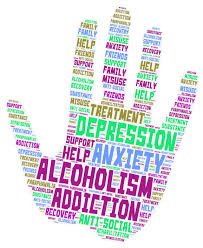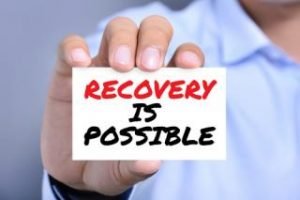by a REACH Community Advocate
Alcohol. Drugs. Substance use. Substance abuse. Substance dependency. Why is a domestic violence agency talking about it? What is an advocate’s role in supporting a survivor living with active addiction?
Before discussing the intersection of substance abuse and domestic violence, it’s important  to begin with a shared understanding of substance use, misuse, abuse (addiction) and dependency. Substance use occurs when someone uses any substance. This can be adhering to pain medication prescribed by a physician or having a glass of wine at dinner, which takes place in many cultures. This is also the use of over the counter sleeping aids. Substance misuse occurs when a drug is used in for the purpose it is not originally intended. This can be taking more than the recommended dose for sleeping aids. It also means when Vicodin is prescribed as pain relief after surgery, but is then misused for headache relief. Substance abuse or addiction occurs when a person continues to use despite any harmful or negative consequences. The drug of choice is continually used to experience the specific feelings or high a drug creates, despite negative work performance or inability to maintain social obligations. Finally, substance dependency occurs when a person’s body has adapted to the effects of the drug. A person craves their drug of choice and will need to use in higher doses or quantity to achieve intended high. Substance dependency is accompanied by withdrawal symptoms.
to begin with a shared understanding of substance use, misuse, abuse (addiction) and dependency. Substance use occurs when someone uses any substance. This can be adhering to pain medication prescribed by a physician or having a glass of wine at dinner, which takes place in many cultures. This is also the use of over the counter sleeping aids. Substance misuse occurs when a drug is used in for the purpose it is not originally intended. This can be taking more than the recommended dose for sleeping aids. It also means when Vicodin is prescribed as pain relief after surgery, but is then misused for headache relief. Substance abuse or addiction occurs when a person continues to use despite any harmful or negative consequences. The drug of choice is continually used to experience the specific feelings or high a drug creates, despite negative work performance or inability to maintain social obligations. Finally, substance dependency occurs when a person’s body has adapted to the effects of the drug. A person craves their drug of choice and will need to use in higher doses or quantity to achieve intended high. Substance dependency is accompanied by withdrawal symptoms.
I have worked at REACH for several years now, and have seen many of the people I work with, living with addiction or in recovery. My role as an advocate is to meet a survivor where they are. This means that when they are ready to talk about the domestic violence, we talk about it. We talk through different safety plans depending on their situation, and the focus of those conversations is about the patterns and types of abuse, how to heal from their trauma, as well as harm reduction.
So how are safety plans, patterns of abuse and trauma associated with addiction? There are several connections that we can make. The first is the use of substances to cope with the emotional and psychological impact the abuse has created. When someone experiences any form of domestic violence, they experience a trauma; trauma being a profound and meaningful loss of control over experience. In order to cope, someone may turn to alcohol to numb the pain or to fall asleep at night without flashbacks or nightmares of what they experienced. Some may use other types of drugs to feel happy; a way to mask the sadness and confusion they are truly feeling. The use of any substance to cope, can also be a way for a survivor to feel that they have control over what they are experiencing.
Another link between domestic violence and substance abuse is when the abusive partner uses past substance use or addiction as part of the pattern of abuse. Whether the survivor is in recovery and the abusive partner breaks them down so much that they relapse, or that a history of addiction is used as a verbal and emotional weapon against the survivor, we, as advocates, need to understand what our role is in supporting the survivor.
When I started as an advocate, any conversation around substance use felt foreign to me. I didn’t know how to talk about it. What do I ask? Am I being insensitive? Am I prying? What does this drug do, what does that drug do? I realized pretty quickly that I had too many questions about substances and addiction, and I needed to start doing research, attend trainings and practice asking the questions. What I found through all of this was that in my attempt to be mindful and nonjudgmental about someone’s situation, by not asking any questions or addressing substance use with the survivor, I was inadvertently creating more shame for them. So I began asking questions, and I sat and listened to the answers. The people we work with are often stigmatized, ostracized and judged because of the domestic violence alone—add substance use/misuse/abuse/dependency to the situation and that judgment grows exponentially. Often times we can feel helpless, especially around the use of substances as a coping mechanism, because it’s not our area of expertise. But we play such a vital role just by being present with someone.
 At the beginning of June, I was fortunate enough to attend the New England School of Addiction and Prevention Studies summer school program at Worcester State University. This training focused on trauma and its connection to addiction, as well as how to support people in recovery. In the first session, “Understanding Addiction and Guiding People to Recovery”, one of the participants asked what our role was in guiding people to recovery; how are we even helping? What the facilitator said in response, left such an impact on me. She said: “Let’s say we have an orchestra full of all different types of instruments playing the same song. It sounds like the song we’re supposed to be listening to because they’re all in unison. Then all of the sudden, you hear a violin changing things up and playing a different song. Your ears are now going to focus on the one violin.” Our role is to be the violin. For survivors, especially those struggling with addiction, they’re hearing the orchestra all playing the same song. Throwing the stigma and the judgmental words at them. We need to be the ones offering hope, offering a different voice, and one without judgment.
At the beginning of June, I was fortunate enough to attend the New England School of Addiction and Prevention Studies summer school program at Worcester State University. This training focused on trauma and its connection to addiction, as well as how to support people in recovery. In the first session, “Understanding Addiction and Guiding People to Recovery”, one of the participants asked what our role was in guiding people to recovery; how are we even helping? What the facilitator said in response, left such an impact on me. She said: “Let’s say we have an orchestra full of all different types of instruments playing the same song. It sounds like the song we’re supposed to be listening to because they’re all in unison. Then all of the sudden, you hear a violin changing things up and playing a different song. Your ears are now going to focus on the one violin.” Our role is to be the violin. For survivors, especially those struggling with addiction, they’re hearing the orchestra all playing the same song. Throwing the stigma and the judgmental words at them. We need to be the ones offering hope, offering a different voice, and one without judgment.
After reading this you may be wondering, how can I help? What is my role in these conversations? How do I learn more about substances and paths to recovery? I want to acknowledge that having conversations about substance use, misuse, abuse or dependency is difficult. Before beginning that conversation with a client, colleague, friend or loved one, it’s important to reflect upon and figure out our own thoughts and beliefs about substance use and addiction. We need to check our preconceived judgments before having such conversations. The most important piece is that someone feels safe when opening up about their use of substances. Showing concern for the person is the first step to that conversation. Then listen when they are ready to talk. Ask about the substance(s) used and what they get from using that substance. Be the violin. Offer hope and voice without stigma.
If you have concerns that a loved one is struggling with any type of substance use, there are resources available. The Department of Public Health Bureau of Substance Addiction Services oversees all of Massachusetts substance abuse programs. The National Institute on Drug Abuse is another great resource when trying to learn more about different drugs, the impact they have on the brain and the high they create.





